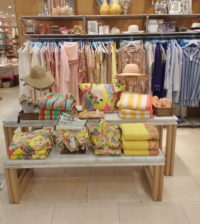- The outdoor beckons. North Face takes kids trekking in Hokkaido
- Exciting events happening in Yokohama
- The Salesman
- RICHARD THE STORK
- Logan 2017
- The Light Between Oceans
- HAROLD AND LILLIAN: A HOLLYWOOD LOVE STORY
- WHAT A WONDERFUL FAMILY 2 (KAZOKU WA TSURAI YO)
- Nikuon June 3 & 4
- Curry Festival 2017 at Yokosuka, June 3 & 4
- Stop by for beer and German sausages at Hibiya Park Oktoberfest 2017 (June 2-11)
- Japan’s next generation bicycle tires don’t need air
- Say Mother’s Day with a European style floral arrangement
- Award-winning short film ‘The Sad Monk’ in theatres
- Tokyo U-14 International Youth Football Tournament 2017
- Picnic Cafe Wangan Zoo Adventure
- Beauty and the Beast 2017
- Food delivery at hanami spots
- Fun events at Huis Ten Bosch This Spring!
It’s a wired world!
One of the primary issues with technological devices is the need for power supplies - which means ‘wires’. While obviously a necessary part of our life at the moment (we are not living in a wireless world yet), cables do pose certain issues. They channel electricity and so are concentrated pathways of power. In some ways, they can be likened to connections in the brain - they help things to work by transporting electrical signals. When cables are too visible and messy, it is easy for the mind itself to feel tangled and confused - thinking processes can get jammed and things can seem more complicated than they need to as the connections that should be behind the scenes are more visible. (Crossed wires can be a literal thing, both with self and others.) Connecting wires together in tubes, with rubber bands, or with bread-loaf clips (for thinner ones) can help to keep things in order. You can also apply labels to the cables so that you know which one is which when it comes time to unplug an item.
Placing a lot of electronic items in one room can create a very unnatural energy in that space that isn’t balancing for the body. Our bodies have their own kind of electricity that powers them, and the unnatural field of energy created from man-made electronics is known to have the potential to create health issues. We can balance such rooms through the integrated use of natural objects. Plants are among the best, as the oxygen-carbon dioxide exchange that they provide is particularly beneficial to our well-being. However, you must be mindful of not having them too close to cables, power outlets, and devices themselves in case water from the pot (or from the act of watering them) leaks and causes a less-than-ideal manifestation of the fire element! Images of natural settings can help too, and area rugs help to ground the space from all that erratic electric energy. Electronics tend to be black or metallic-toned, so bringing in other colours - primarily reds, greens, and earth tones - can help give the room an ambiance whose warmth come from more than a glowing screen.
If a room is multi-purpose - with a work space, television, library, and/or creative station - then it is important to delineate different areas so the space doesn’t become an amorphous conglomeration of expensive equipment and disparate objects. The room pictured here is one such space: there is a work station with the computer, the music equipment indicates that there is creativity going on (or that it is an intention), and there is also a big-screen TV. Having things set so that one area does not distract from another is a key to having productive work time, inspired creative time, and relaxing leisure time. Different-coloured area rugs for each space can be a huge help in creating some boundaries. Appropriate seating for each space is a must - you should not be watching TV from an office chair, or you will not have a clean relationship with that piece of furniture. (It looks as though this particular room would have space for a more comfortable sofa.) Appropriate storage is always a key - loose items lying around rather than being stored on shelves or in storage units can make both productivity and relaxation an elusive goal.
With all of the items we have in our lives now, our homes can often feature them more than they feature us. It is important to remember that our spaces are designed to serve us, not the machines. (This sounds like it’s leading into a science-fiction movie, and it’s true…) Blending practicality and comfort takes conscious attention and some mindful planning, but it is possible.
May your home and everything in it support you in all your endeavours.



